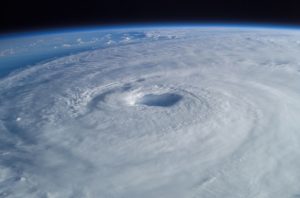
CoreLogic’s Chief Economist Frank Nothaft discusses how the increased prevalence of natural disasters are impacting the housing market.
Nothaft said stats show serious delinquency rates rise in the months following a natural disaster.
"Within three months, there's a huge spike in serious delinquency rates on mortgages. And it happens even on those properties that didn't have any damage,” Nothaft said.
The serious delinquency rate in Houston, Texas, before Hurricane Harvey was less than 1%. However, serious delinquency rates rose to 2.5% less than six months after the storm. Willmington, North Carolina, saw serious delinquency rates increase from less than 1% before Hurricane Florence to 1.8% just three months after.
California towns Chico and Santa Rosa both saw serious delinquency rates rise to 1.7% and 1.5%, respectively, three months after wildfires. Both markets had serious delinquency rates under 1% before the fires.
“Residents working in a disaster-damaged area will often find themselves without the income they were expecting to make their bill payments. As a result, even those whose homes are completely undamaged can be at an elevated risk of delinquency,” Nothaft said.
CoreLogic’s latest Loan Performance Insight report revealed that 3.8% of home mortgages were in some state of delinquency in July, which is a decline from 4.1% in July 2018—the lowest July number in more than 20 years.
The share of delinquent mortgages in July peaked at 11.1% in 2010.
CoreLogic also found that home sales in areas affected by natural disasters fell sharply. Paradise, California, saw home sales fall nearly 40-50% from the year prior.
Annual home-price growth in both Butte County and Sonoma County were -2%. However, following wildfires in both areas, annual home-price growth in Sonoma County rose to 3% six months after the disaster. Butte County county reported annual home-price growth of 6% six months after the wildfire.
“Residents throughout the area may find themselves earning less and spending more than they had before the catastrophe, even if their own homes were untouched by the disaster,” Nothaft said.

 theMReport.com Your trusted source for mortgage banking news
theMReport.com Your trusted source for mortgage banking news








